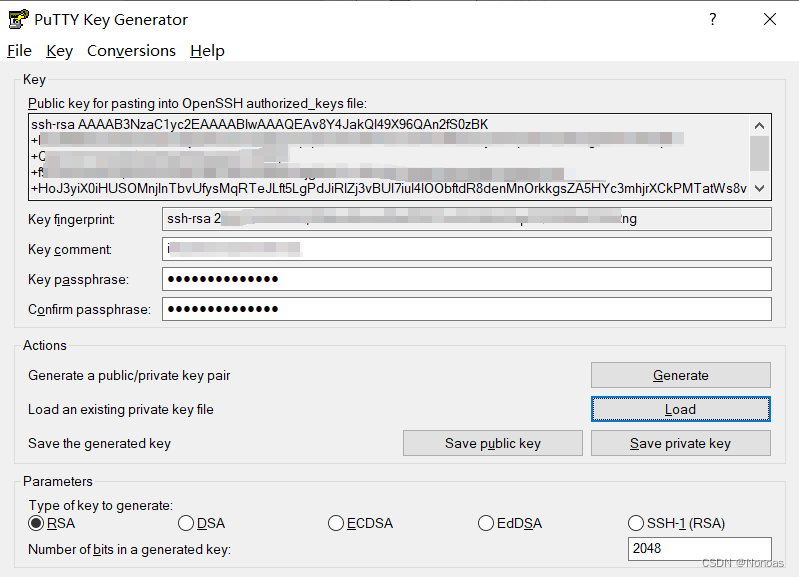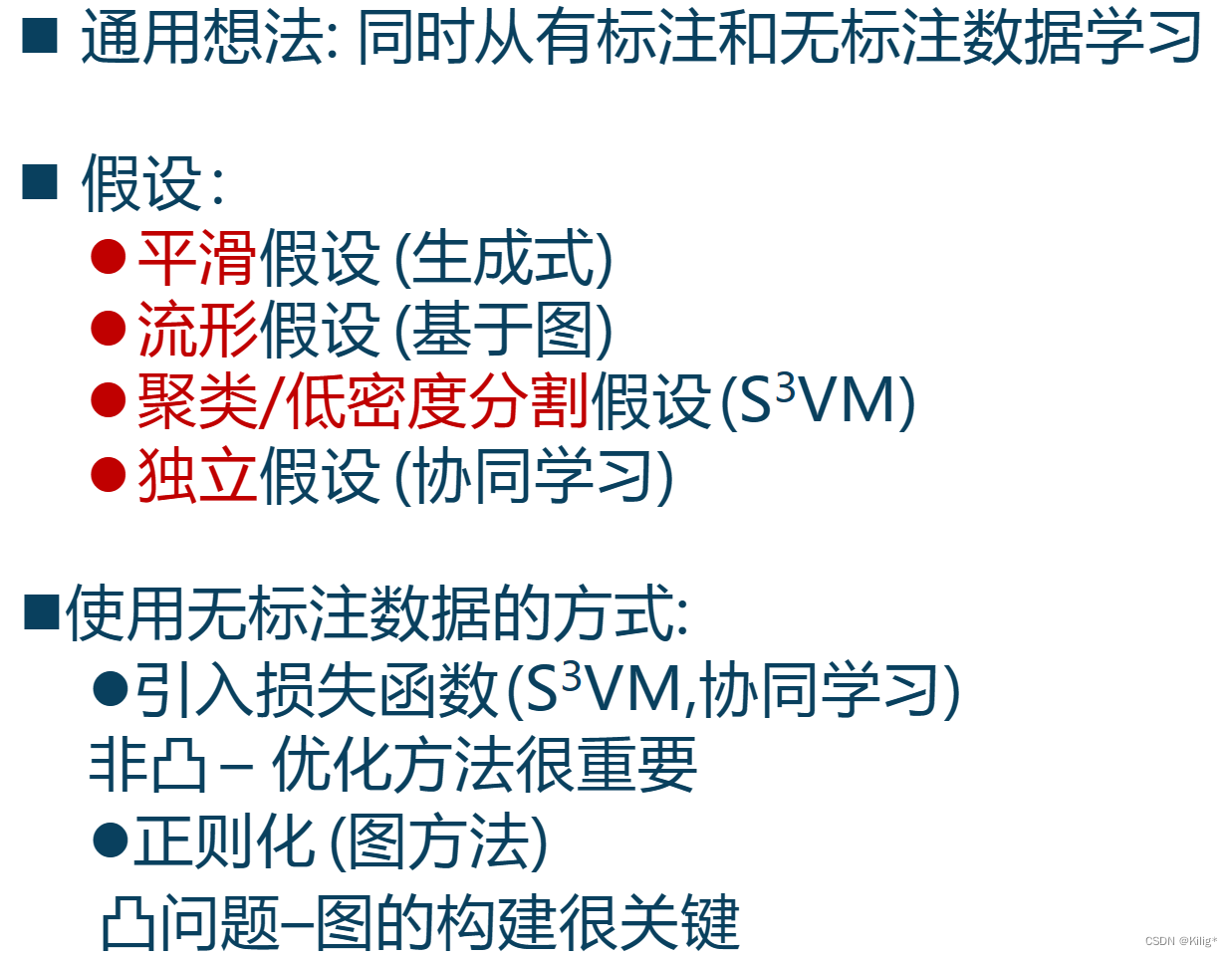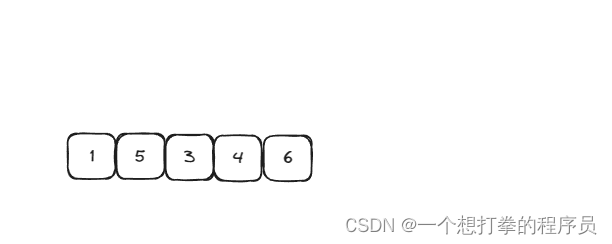A.2023(思维)
题意:
有一个序列 A = a 1 , a 2 , . . . , a n + k A = a_1, a_2, ..., a_{n + k} A=a1,a2,...,an+k,且这个序列满足 ∏ i = 1 n + k a i = 2023 \prod\limits_{i = 1}^{n + k}a_i = 2023 i=1∏n+kai=2023,而这个序列中的 k k k个数字被删除了,我们只知道剩下的数字序列 B = b 1 , b 2 , . . . , b n B = b_1, b_2, ..., b_{n} B=b1,b2,...,bn。
请你求出被删除的数字序列。
分析:
可以计算给出序列 B B B的乘积 v a l val val,如果 v a l val val是 2023 2023 2023的因子,那么只需要打印 2023 v a l , 1 , . . . , 1 ( k − 1 个 1 ) \frac{2023}{val}, 1, ..., 1(k - 1\text{个}1) val2023,1,...,1(k−1个1)。
如果 v a l val val不是 2023 2023 2023的因子,则无解。
代码:
#include<bits/stdc++.h>
using namespace std;
int n, k, b[15];
void solve() {
cin >> n >> k;
for (int i = 1; i <= n; i++) cin >> b[i];
int ans = 2023;
for (int i = 1; i <= n; i++) {
if (ans % b[i] != 0) {
cout << "No" << endl;
return;
}
ans /= b[i];
}
cout << "Yes" << endl;
cout << ans;
for (int i = 2; i <= k; i++) {
cout << " 1";
}
cout << endl;
}
int main(){
int Case;
cin >> Case;
while (Case--) {
solve();
}
return 0;
}
B.Two Divisors(思维)
题意:
给出数字 x x x的最大和次大因子 a , b a,b a,b,请你求出数字 x x x。
- 规定 ( 1 ≤ a < b < x ) (1 \le a < b < x) (1≤a<b<x)
分析:
首先考虑 a , b a, b a,b的最小公倍数,如果最小公倍数与 b b b不相同,那么要求的数字 x x x就是 a , b a, b a,b的最小公倍数。
如果两数的最小公倍数就是 b b b,那么此时 b = a × p b = a \times p b=a×p,而 p p p必然为 x x x的最小素因子,因此, x = b × p = b × b a x = b \times p = b \times \frac{b}{a} x=b×p=b×ab
代码:
#include<bits/stdc++.h>
using namespace std;
typedef long long LL;
void solve() {
LL a, b;
cin >> a >> b;
LL gcd = __gcd(a, b);
LL ans = a * b / gcd;
if (ans == b) ans = ans / a * b;
cout << ans << endl;
}
int main(){
int Case;
cin >> Case;
while (Case--) {
solve();
}
return 0;
}
C.Training Before the Olympiad(思维)
题意:
给出一个包含 n n n个数字的序列 A = a 1 , a 2 , . . . , a n A = a_1, a_2, ..., a_n A=a1,a2,...,an。每位玩家在自己的回合可以进行以下操作:
-
如果数组中只剩下一个数字,游戏结束
-
否则,选择数组中两个元素 a i , a j ( i ≠ j ) a_i, a_j(i \ne j) ai,aj(i=j),删除这两个元素并将 ⌊ a i + a j 2 ⌋ \lfloor \frac{a_i + a_j}{2} \rfloor ⌊2ai+aj⌋放回数组中。
先手希望最后的数字尽可能大,后手希望最后的数字尽可能小,假设两人都极为聪明, 问:对于序列 A A A的所有前缀,进行游戏最后得到的数字是多少?
分析:
由于放回数组的元素为 ⌊ a i + a j 2 ⌋ \lfloor \frac{a_i + a_j}{2} \rfloor ⌊2ai+aj⌋,那么,只有被删除的两个数字恰好为一个奇数和一个偶数时才会导致最后的结果变小。
那么,先手为了使结果尽可能大,每次操作会优先将两个奇数删除,后手则会选择一奇一偶进行删除,以先后手均进行一次操作为一轮,那么每轮会删除 3 3 3个奇数,且答案会减少 1 1 1,即答案总共会减少 ⌊ 奇数个数 3 ⌋ \lfloor \frac{\text{奇数个数}}{3}\rfloor ⌊3奇数个数⌋。
那么最后,剩下的奇数个数就分为三种情况:
-
0个,已经没有奇数了,不影响答案
-
1个,此时只能将该奇数与偶数一起删除,会使答案再减少一
-
2个,先手可以将这两个奇数一起删除,因此不会再影响后续答案
对于 1 ∼ i 1 \sim i 1∼i的前缀的答案即为前 i i i个数字的前缀和减去减少的数量即可。
hint: 当只有一个数字时,直接输出该数字即可。
代码:
#include<bits/stdc++.h>
using namespace std;
typedef long long LL;
LL a[100005];
void solve() {
int n;
cin >> n;
for (int i = 1; i <= n; i++) cin >> a[i];
LL sum = a[1];
int odd = 0, even = 0;
if (a[1] % 2 == 0) even++;
else odd++;
cout << sum;
for (int i = 2; i <= n; i++) {
sum += a[i];
if (a[i] % 2 == 0) even++;
else odd++;
if (odd % 3 == 1) cout << ' ' << sum - odd / 3 - 1;
else cout << ' ' << sum - odd / 3;
}
cout << endl;
}
int main(){
int Case;
cin >> Case;
while (Case--) {
solve();
}
return 0;
}
D.Mathematical Problem(找规律)
题意:
给出一个奇数 n n n,请你输出满足以下条件的 n n n个完全平方数:
-
这些完全平方数的十进制位数均为 n n n
-
所有完全平方数均可由其中一个完全平方数通过重排数字得到
分析:
对于 n = 1 n = 1 n=1,此时的答案选择 1 1 1即可。
对于 n = 3 n = 3 n=3,由样例可知答案可选: 169 , 196 , 961 169, 196, 961 169,196,961。
对于 n = i + 2 n = i + 2 n=i+2,不难发现,对于所有的 n = i n = i n=i的答案,均可通过乘上 100 100 100直接得到 i i i个满足要求的完全平方数。
证明: 若 b = c 2 ,则 b × 100 = ( c × 10 ) 2 \text{若}b = c^{2},\text{则}b \times 100 = (c \times 10)^{2} 若b=c2,则b×100=(c×10)2
但是这样只能获得 i i i个答案,还需要获得两个完全平方数,观察题目样例可以发现 169 = 1 3 2 , 961 = 3 1 2 169 = 13^{2}, 961 = 31^{2} 169=132,961=312。由于通过将 n = i n = i n=i的答案乘上 100 100 100得到 i i i个 n = i + 2 n = i + 2 n=i+2的答案,那么多出的两个数字均为 0 0 0,尝试将这两个 0 0 0加入 169 169 169和 961 961 961中,发现: 10609 = 10 3 2 , 90601 = 30 1 2 10609 = 103^{2}, 90601 = 301^{2} 10609=1032,90601=3012。继续尝试: 1006009 = 100 3 2 , 9006001 = 300 1 2 , . . . 1006009 = 1003^{2}, 9006001 = 3001^{2}, ... 1006009=10032,9006001=30012,...。
即:还差的两个完全平方数可以通过 169 , 961 169,961 169,961在百位和十位,十位和个位之间各添加 n − 3 2 \frac{n - 3}{2} 2n−3个 0 0 0得到。
预处理所有答案,对于每个询问输出预处理的答案即可。
代码:
#include<bits/stdc++.h>
using namespace std;
typedef long long LL;
vector<string> ans[105];
void init() {
ans[1].push_back("1");
ans[3].push_back("169");
ans[3].push_back("196");
ans[3].push_back("961");
for (int i = 5; i <= 99; i += 2) {
for (auto j : ans[i - 2]) {
ans[i].push_back(j + "00");
}
string s1 = "1", s2 = "9";
int len = (i - 3) / 2;
for (int j = 0; j < len; j++) {
s1 += '0', s2 += '0';
}
s1 += '6', s2 += '6';
for (int j = 0; j < len; j++) {
s1 += '0', s2 += '0';
}
s1 += '9', s2 += '1';
ans[i].push_back(s1);
ans[i].push_back(s2);
}
}
void solve() {
int n;
cin >> n;
for (auto i : ans[n]) {
cout << i << endl;
}
}
int main(){
init();
int Case;
cin >> Case;
while (Case--) {
solve();
}
return 0;
}
E.Happy Life in University(DFS序,线段树)
题意:
有一棵根节点为 1 1 1的树,且树上每个节点均被涂上了一种颜色,你可以任取树上两点 u , v ( u ≠ v ) u, v(u \ne v) u,v(u=v),求最大的 d i f f ( u , l c a ( u , v ) ) × d i f f ( v , l c a ( u , v ) ) diff(u, lca(u, v)) \times diff(v, lca(u, v)) diff(u,lca(u,v))×diff(v,lca(u,v))。
其中:
-
d i f f ( u , v ) diff(u, v) diff(u,v)为点 u u u到点 v v v的路径上不同颜色的种类
-
l c a ( u , v ) lca(u, v) lca(u,v)为点 u u u和点 v v v的最近公共祖先
分析:
对于以节点 i i i为根节点的子树,若想以节点 i i i为最近公共祖先来计算答案,那么只能在不同的子树中取两个节点(由于路径越长颜色越多,实际被选中的一定为叶节点)。
那么当 l c a ( u , v ) = i lca(u, v) = i lca(u,v)=i时,实际上就会选择所有子树中路径包含颜色最多的前两棵子树,此时答案为这两棵子树的最大颜色数量的乘积。
因此,需要有一个数据结构来维护区间上的最大值,此时可以想到使用线段树进行维护。
想要使用线段树进行维护,那么就需要将树结构转化成线性的结构,这里可以使用 D f s Dfs Dfs序进行转化,优点是任意子树转化后在数组中均是连续的。
注意:转化过程中,需要计算根节点到该节点的路径上包含的不同颜色种类,并使用线段树进行单点更新。转化完整棵子树后,还需记录该子树最后遍历的节点所在的序号(记录该子树的存储范围)。
然后考虑查询每个节点为最近公共祖先时的最大价值,此时需要消除所有该子树的祖先节点带来的影响,可以通过线段树区间减法来进行,每次计算完一个节点后,对整棵子树通过 − 1 -1 −1的方式来消除该节点的影响,但考虑子树中可能还包含该颜色的节点,因此需要对该节点到达叶节点的所有不同路径上最近的颜色相同的节点再通过区间加法将该颜色加回来。
遍历完树后,就得到了最大的价值。
注意:多组输入,需要初始化(记录答案的变量要初始化为 1 1 1)。
代码:
#include<bits/stdc++.h>
using namespace std;
typedef long long LL;
const int N = 3e5 + 5e2;
int n, cnt, tot, num[N][2], pre[N], col[N];
LL ans, lazy[N << 2], T[N << 2];
vector<int> G[N], nxt[N];
void init() {
ans = 1;
cnt = tot = 0;
for (int i = 0; i <= n; i++) {
G[i].clear();
nxt[i].clear();
pre[i] = 0;
}
}
void pushup(int x) {
T[x] = max(T[x << 1], T[x << 1 | 1]);
}
void build(int l, int r, int x) {
if (l == r) {
lazy[x] = T[x] = 0;
return;
}
lazy[x] = 0;
int mid = l + r >> 1;
build(l, mid, x << 1);
build(mid + 1, r, x << 1 | 1);
pushup(x);
}
void pushdown(int x) {
if (lazy[x]) {
lazy[x << 1] += lazy[x];
lazy[x << 1 | 1] += lazy[x];
T[x << 1] += lazy[x];
T[x << 1 | 1] += lazy[x];
lazy[x] = 0;
}
}
void update (int l, int r, int UL, int UR, int x, int val) {
if (l >= UL && r <= UR) {
lazy[x] += val;
T[x] += val;
return;
}
pushdown(x);
int mid = l + r >> 1;
if (UL <= mid) update(l, mid, UL, UR, x << 1, val);
if (UR > mid) update(mid + 1, r, UL, UR, x << 1 | 1, val);
pushup(x);
}
int query(int l, int r, int QL, int QR, int x) {
if (l >= QL && r <= QR) {
return T[x];
}
pushdown(x);
int mid = l + r >> 1;
int ans = 0;
if (QL <= mid) ans = max(ans, query(l, mid, QL, QR, x << 1));
if (QR > mid) ans = max(ans, query(mid + 1, r, QL, QR, x << 1 | 1));
return ans;
}
void dfs1(int root) {
num[root][0] = ++tot;//节点root新的编号
int p = pre[col[root]];//查看上一个该颜色的节点编号
if (p == 0) cnt++;//第一次出现,颜色种类增加
else nxt[p].push_back(root);//不是第一次出现,记录上个节点的一个后继为当前节点
pre[col[root]] = root;
update(1, n, tot, tot, 1, cnt);//更新
for (auto i : G[root]) {
dfs1(i);
}
/*回溯*/
num[root][1] = tot;//节点root子树最后一个节点所在的编号
if (p == 0) cnt--;
pre[col[root]] = p;
}
void dfs2(int root) {
LL maxn = 1;
for (auto i : G[root]) {
LL val = query(1, n, num[i][0], num[i][1], 1);
ans = max(ans, maxn * val);
maxn = max(maxn, val);
}
update(1, n, num[root][0], num[root][1], 1, -1);//减去该颜色
for (auto i : nxt[root]) {//拥有该颜色的子树加回来
update(1, n, num[i][0], num[i][1], 1, 1);
}
for (auto i : G[root]) {
dfs2(i);
}
}
void solve() {
cin >> n;
init();
for (int i = 2; i <= n; i++) {
int p;
cin >> p;
G[p].push_back(i);
}
for (int i = 1; i <= n; i++) {
cin >> col[i];
}
build(1, n, 1);
dfs1(1);
dfs2(1);
cout << ans << endl;
}
int main(){
ios::sync_with_stdio(false);
int Case;
cin >> Case;
while (Case--) {
solve();
}
return 0;
}
学习交流
以下为学习交流QQ群,群号: 546235402,每周题解完成后都会转发到群中,大家可以加群一起交流做题思路,分享做题技巧,欢迎大家的加入。




















